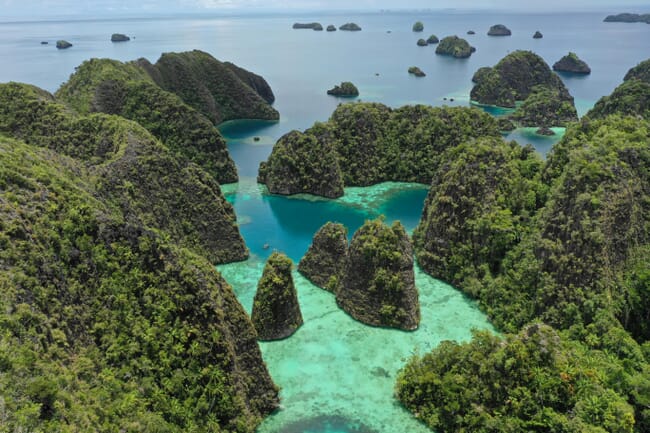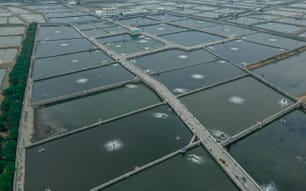
Raja Ampat in Indonesia is not only a globally renowned marine tourism paradise – it also holds significant potential as a national and international centre for grouper production. Professor of marine ecology at IPB University (Bogor Agricultural University), Professor Dietriech Geoffrey Bengen, emphasises that Raja Ampat’s rich marine biodiversity gives it a strategic position in the global grouper supply chain.
“Raja Ampat is dubbed as ‘the heart of the world’s coral triangle’. This reality makes the region ideal for capture fisheries and grouper farming,” he said in a press release.
Professor Dietriech added that the local authorities and various stakeholders have shown commitment through the development of grouper aquaculture and nurseries to strengthen national food security. Since 2005, Raja Ampat has been actively involved in the live grouper trade. While the main production still comes from wild catches sent to major cities such as Makassar and Kendari before export to Hong Kong and China, the government continues to promote the dissemination of seeds and aquaculture technology to boost productivity and added value in a sustainable manner.
Coastal Mining as a risk to grouper populations
However, Professor Dietriech cautions that this progress in the blue economy is now threatened by coastal mining activities. He warns that mining activities can have very damaging direct and indirect impacts that to aquatic habitats, particularly to sensitive grouper breeding and farming areas.
“The direct impact can be seen in sedimentation and high water turbidity due to mining soil erosion. These sediments can cover coral reefs and seagrass beds, which are important habitats for grouper fish to spawn and shelter,” he explained.
In addition, mining waste containing heavy metals such as nickel, mercury and arsenic can be toxic to marine life. Grouper eggs and larvae are particularly vulnerable to exposure to these heavy metals, causing reproductive and growth disorders. More dangerously, these heavy metals can accumulate in the bodies of marine organisms and increase their concentration in the food chain, including humans. Furthermore, deteriorating water quality due to mining waste and changes in environmental parameters such as temperature and salinity, indirectly affect grouper survival. The loss of coral reefs and seagrass will disrupt the natural food chain, threatening the growth of fry and young groupers.
“Other physical impacts such as changes in seabed morphology due to dredging, as well as habitat fragmentation, also disrupt fish migration patterns and worsen fisheries sustainability. In aquaculture, declining water quality causes stress in fish, increases the risk of disease, and leads to mass mortality. This is economically costly and threatens the food security of coastal communities,” he added.
Professor Dietriech explained that the protection of marine ecosystems such as in Raja Ampat is a long-term investment for the economic and social sustainability of the community.
“Raja Ampat is not only a tourist destination and the centre of world grouper production, but also an important symbol of our efforts to maintain a balance between conservation and natural resource utilisation,” he concluded.




